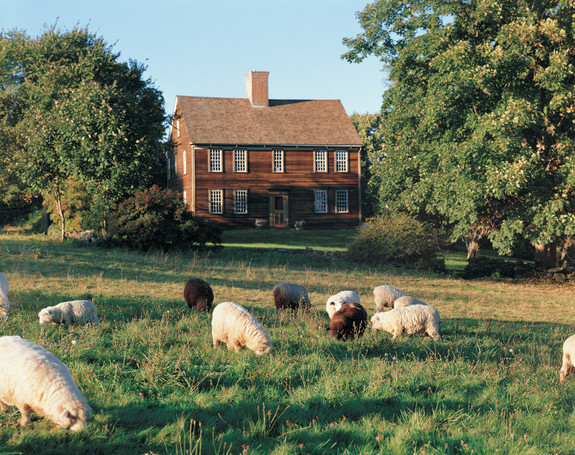Watson Farm

Before European settlement, Native Americans occupied Conanicut Island, clearing the land and planting crops. The resulting grasslands attracted colonial farmers for pasturing their sheep and cattle. In 1789, Job Watson purchased a piece of this rich farmland, and for the next two centuries five successive generations of the Watson family cultivated the land.
Today, this 265-acre property remains a working family farm. Using innovative sustainable practices, the farm managers continue the tradition of pastoral husbandry, grazing Heritage Red Devon cattle and sheep on the scenic seaside pastures. The farmers produce 100% grass-fed beef and lamb and wool blankets for local markets.

Visitors are welcome to explore the farmland on their own. By following a self-guided walking tour, visitors may explore farm fields with grazing livestock, stroll along the shore, observe wildlife, and view seasonal farm activities. The 1796 house, still used as the farmers' residence, is not open to the public.
Open
Tuesday, Thursday, and Sunday, June 1 - October 15
1:00 - 5:00 p.m.
The Watson Farm is a Historic New England property.
Top photo: A working family farm - Today, more than 200 years after Job Watson first worked the land, Watson Farm is still a working family farm. Using methods of sustainable agriculture to produce quality grass -fed beef, lamb, and wool, Watson Farm maintains the distinct flavor of rural New England’s agricultural heritage. Visitors are encouraged to explore its trails with views of fields, pastures and shoreline. The 1796 farmhouse, the farm managers’ residence, is not open to the public.
Bottom photo: Farm pastures - The Watson Farm pastures slope gently all the way to the west passage of Narragansett Bay. Less uniform in appearance than hayfields and scattered with trees, the pastures are managed specifically for livestock to graze. The trees provide shade and browse, bringing up minerals from deep in the earth. As the cattle nibble on the lower branches, they trim them into the flat-bottomed silhouette that characterizes the farm's landscape.